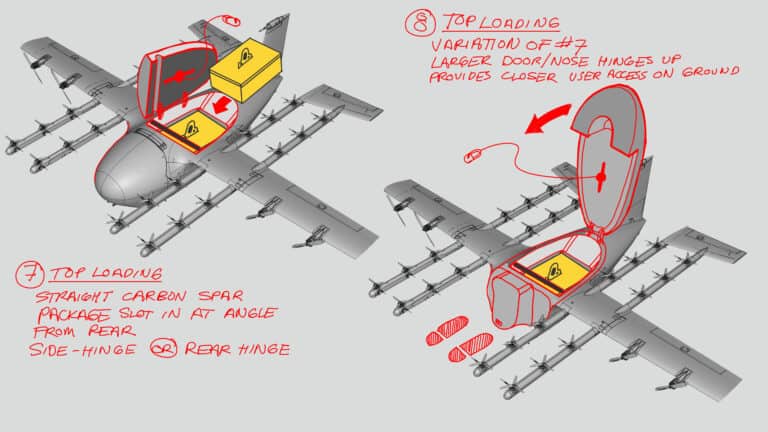Wing, an Alphabet subsidiary, unveiled two new delivery drones. The drones are based on the Hummingbird, a model that delivered hundreds of thousands of orders in Australia and the US. Drone delivery is growing, but the European market could be years away from taking off.
Wing has a fleet of more than 200,000 delivery drones in the US and Australia. The company is one of the world’s largest drone delivery services.
Every order, from food to medication, is delivered by the Hummingbird. The model is somewhere in between an aeroplane and a helicopter. The helicopter mode ensures an accurate landing. The plane mode ensures a silent flight.
Wing recently announced two new designs. Both drones are derived from the Hummingbird. One of the designs has a storage dock reminiscent of a cargo plane.
Growing pains
None of the two will replace the Hummingbird, CEO Adam Woodworth told Bloomberg. Wing’s engineers developed the prototypes to test the company’s development process. Wing wants to be able to roll out new models quickly.
The ‘perfect’ delivery drone differs per neighbourhood, city, country and continent. The drones must be quiet and safe; otherwise, permits are hard to get.
A drone that flies silently and safely through the countryside doesn’t guarantee the same performance in residential areas. Trees, houses, air traffic and almost every other environmental factor affect noise and safety.
A serious drone delivery service must be able to come up with new designs and adaptations on a whim. Wing’s two prototypes are a way of testing and improving the current design process.
Drone delivery in Europe
Throughout most of the European Union, drone delivery is in its infancy. Though European regulation has permitted autonomous drones deliveries since 2020, it’s everything but easy. You’ll need a licence for each autonomous flight. Most member states have an agency that grants licenses to those able to demonstrate the safety of a flight.
Companies like Wing make a lot of flights. The administrative work is extremely expensive. Most member states are unfavourable for delivery services at this time.
That may change in the long term. U-Space, part of the EU Aviation Safety Agency, is developing a framework for managing autonomous aviation. Eventually, the framework should make it possible to automatically obtain permits for autonomous flights. We’re years away from the first implementation.
Tip: Telefónica wants to use drones for various purposes, including surveillance
